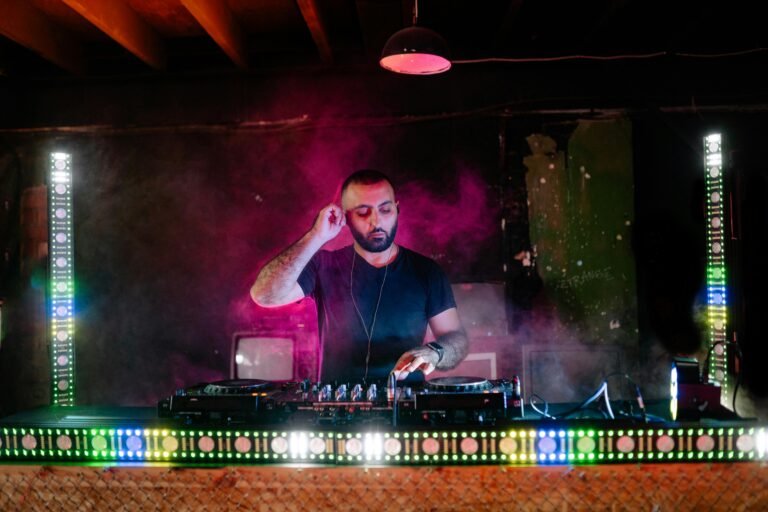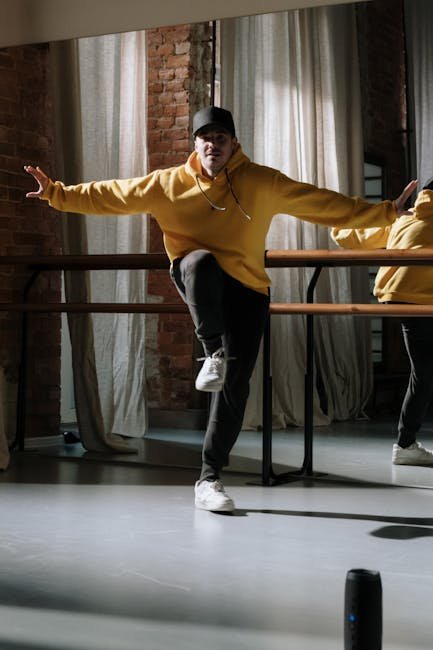Sampling has transformed from experimental tape manipulation techniques of the 1940s into the backbone of modern music production, reshaping how artists create and audiences consume music. This revolutionary practice has produced some of the most iconic tracks in music history, from hip-hop classics to pop masterpieces, fundamentally altering the creative landscape of popular music.
The Experimental Origins: Musique Concrète and Early Innovation
The roots of sampling trace back to the experimental musique concrète movement in France during the 1940s, pioneered by composer Pierre Schaeffer. This avant-garde approach involved manipulating recorded sounds using tape recorders, creating compositions by splicing, looping, and layering fragments of real-world audio. Schaeffer’s techniques laid the groundwork for what would eventually become modern sampling, demonstrating that any sound could serve as raw material for musical creation.
The technique evolved through the 1950s and 1960s as recording legends like The Beatles and Marvin Gaye began incorporating these methods into commercial music. An early example was “The Flying Saucer” by Buchanan & Goodman in 1956, which featured unedited speech samples that would likely face copyright challenges today.
The Digital Revolution: Fairlight CMI Changes Everything
The late 1970s marked a pivotal moment with the introduction of the Fairlight CMI (Computer Musical Instrument) in 1979. Created by Australian inventors Peter Vogel and Kim Ryrie, the Fairlight was the first commercially available digital synthesizer with sampling capabilities. While originally designed for digital synthesis to replicate acoustic instruments, users quickly discovered its potential for creative sampling.
The term “sample” itself was coined by Vogel and Ryrie to describe this Fairlight feature. When Vogel recorded approximately one second of piano performance from a radio broadcast and discovered he could recreate piano sounds by playing it back at different pitches, he realized the revolutionary potential of this technology. The result sounded more authentic than synthesized alternatives.
Trevor Horn became the “key architect” in incorporating Fairlight sampling into 1980s pop music. Early adopters included Kate Bush, Peter Gabriel, Stevie Wonder, Herbie Hancock, and Thomas Dolby. Kate Bush’s “Never For Ever” (1980) was among the first major albums to feature Fairlight sampling, while Peter Gabriel’s fourth solo album (1982) extensively showcased the instrument’s capabilities.
The 1982 Fairlight Series II introduced the legendary Page R, the first serious music sequencer that combined sampling and computer sequencing in a single machine. This innovation ignited a revolution in music production, enabling artists to create entire albums using the Fairlight for beats, rhythm loops, atmospheric sounds, and melodic elements.
Hip-Hop’s Birth and the Merry-Go-Round Technique
Hip-hop’s relationship with sampling began on August 11, 1973, at a Bronx apartment complex party thrown by Clive Campbell, known as DJ Kool Herc. Herc pioneered the “Merry-Go-Round” technique, using twin turntables to extend drum breaks from funk and soul records, creating extended instrumental sections for dancers and rappers.
The Incredible Bongo Band’s “Apache” became hip-hop’s first significant sample source, with Herc calling it the “national anthem of hip-hop”. This technique of looping breaks established the foundation for what would become sampling culture, creating new compositions from existing recordings.
The Golden Age: Classic Samples That Defined Hip-Hop
The Most Sampled Break of All Time
The Winstons’ “Amen, Brother” (1969) contains the most sampled drum break in music history. The “Amen Break,” performed by drummer G.C. Coleman, has appeared in over 4,500 officially released tracks according to WhoSampled.com, though the actual number is likely much higher. This six-second drum break became the rhythmic foundation for countless hip-hop classics, including N.W.A’s “Straight Outta Compton”.
James Brown: The Godfather of Sampled Funk
James Brown’s catalog became hip-hop’s most fertile sampling ground. His track “Funky Drummer” provided the backbone for countless productions, while “Think (About It)” by Lyn Collins (written and produced by Brown) became another heavily sampled classic. Public Enemy extensively used Brown samples on tracks like “Rebel Without A Pause” and “Bring the Noise”, while N.W.A sampled “Fuck Tha Police”.
The Public Enemy Revolution
Public Enemy and their production team The Bomb Squad elevated sampling to an art form with their dense, layered approach. Producer Hank Shocklee developed a philosophy of viewing each sample as an individual instrument within the group. Rather than using single loops like other producers, The Bomb Squad stacked multiple samples, creating what Rolling Stone described as “chaotic, noisy stew”.
Their masterpiece “It Takes a Nation of Millions to Hold Us Back” (1987) showcased intricate sample stacking using equipment like the Korg DDD-1, E-mu SP-1200, and Roland TR-808. The SP-1200’s 12-bit, 26.040 kHz sampling quality created the gritty, crunchy texture that became synonymous with their sound. Notably, Public Enemy records featured no bass lines, as Shocklee considered them too melodic for the raw urgency he sought.
Classic Hip-Hop Tracks and Their Iconic Samples
“Rapper’s Delight” – The Sugarhill Gang (1979)
This pioneering hip-hop single sampled Chic’s “Good Times,” becoming the first hip-hop track to reach the Billboard Top 40. The track demonstrated sampling’s commercial potential and established the template for hip-hop production.
“California Love” – 2Pac feat. Dr. Dre (1996)
Dr. Dre sampled the obscure Joe Cocker deep cut “Woman to Woman” (1972), transforming an unreleased track into one of hip-hop’s biggest anthems. This exemplified how sampling could resurrect forgotten music and introduce it to new audiences.
“Through the Wire” – Kanye West (2003)
Kanye West sampled Chaka Khan’s “Through the Fire,” speeding up the vocals to create his signature “chipmunk soul” sound. Despite Khan’s initial displeasure with the high-pitched vocal treatment, the track established West as a major producer and demonstrated innovative sampling techniques.
“C.R.E.A.M.” – Wu-Tang Clan (1993)
RZA used the opening five seconds of The Charmels’ “As Long as I’ve Got You” (co-written by Isaac Hayes) to create this iconic track. The sample exemplifies how obscure recordings could gain new life through hip-hop, with the Wu-Tang Clan bringing attention to commercially unsuccessful songs.
“They Reminisce Over You (T.R.O.Y.)” – Pete Rock & CL Smooth (1992)
Pete Rock sampled Tom Scott and The California Dreamers’ “Today,” crafting one of hip-hop’s most beloved productions. The majestic horn sample became the foundation for this quintessential golden-age classic.
The Native Tongues: Jazz-Influenced Innovation
The Native Tongues collective, featuring De La Soul, A Tribe Called Quest, and Jungle Brothers, pioneered the use of eclectic sampling and jazz-influenced beats in the late 1980s and early 1990s. This movement inspired later alternative hip-hop artists including Kanye West, OutKast, Common, J Dilla, and Pharrell Williams.
A Tribe Called Quest’s “Bonita Applebum” sampled Rotary Connection’s “Memory Band,” using a distinctive sitar riff from the 1967 psychedelic soul track. This exemplified the Native Tongues’ approach of incorporating diverse musical elements beyond traditional funk and soul sources.
Nas and Illmatic: Sampling Perfection
Nas’s “Illmatic” (1994) represents the pinnacle of sampling artistry, with producers like DJ Premier, Pete Rock, and Q-Tip crafting beats that perfectly complemented Nas’s lyrical prowess.
“N.Y. State of Mind” features a haunting piano loop from Joe Chambers’ “Mind Rain” (1978), created by DJ Premier as a minimalist masterpiece. “Memory Lane” samples Reuben Wilson’s “We’re in Love” (1971), providing a lush, soulful backdrop for Nas’s nostalgic reflections. “The World Is Yours” incorporates Ahmad Jamal’s “I Love Music,” with Pete Rock transforming the jazz sample into one of hip-hop’s most recognizable beats.
Modern Sampling: Technological Advancement and Creative Evolution
Contemporary sampling has evolved far beyond simple loops, incorporating techniques like chopping, pitch-shifting, time-stretching, and granular synthesis. Producers like J Dilla revolutionized sampling with his innovative approach to rhythm and timing, while Kanye West popularized “chipmunk soul” by speeding up R&B vocals.
Modern digital audio workstations like Pro Tools and Ableton Live have democratized sampling, allowing producers to manipulate samples with unprecedented precision. The Akai MPC series remains central to hip-hop production, enabling complex compositions without additional instruments or formal training.
The Cultural Impact and Legal Framework
Sampling has fundamentally altered music consumption patterns, with hip-hop tracks serving as gateways to discovering older music across funk, soul, jazz, and R&B. This cultural exchange has preserved musical history while creating new artistic expressions, though it has also generated complex legal battles over copyright and compensation.
The practice has evolved from underground technique to mainstream production method, influencing genres far beyond hip-hop. From Daft Punk’s filtered disco samples to contemporary pop productions, sampling continues to reshape how artists create and audiences experience music.
Sampling transformed music from a linear creative process into a circular one, where past and present converge to create something entirely new. This revolutionary approach didn’t just change how music was made it fundamentally altered our understanding of creativity, authorship, and cultural continuity in the digital age.








